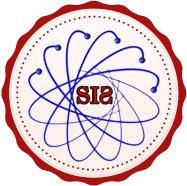ROLE OF IOT TECHNOLOGY FOR DEVELOPING SMART ENVIRONMENTS: CHALLENGES AND PERSPECTIVES
Gayratov Zafarjon Kamoliddinovich
The Samarkand branch of TUIT named after Muhammad al-Khwarizmi, teachers of department “Telecommunication engineering”, Uzbekistan.
Kilichov Jasur Ruzikulovich
The Samarkand branch of TUIT named after Muhammad al-Khwarizmi, teachers of department “Telecommunication engineering”, Uzbekistan
Najmiyev Mirjalol Makhmudjonovich
The Samarkand branch of TUIT named after Muhammad al-Khwarizmi, students of faculty “Telecommunication Technologies and Professional Education”, Uzbekistan
Almardonov Asliddin Faxriddin oʻgʻli
The Samarkand branch of TUIT named after Muhammad al-Khwarizmi, students of faculty “Telecommunication Technologies and Professional Education”, Uzbekistan.
##semicolon## Internet of Things (IoT), Smart Environments, IoT Technologies, Sensor Networks, Smart Homes, Smart Cities, Industrial IoT (IIoT), Connectivity Protocols, Edge Computing, Data Analytics, Machine Learning in IoT, IoT Security, Privacy in IoT, IoT Interoperability, IoT Standards, IoT Scalability, IoT Management.
सार
The Internet of Things (IoT) represents a transformative technology that is redefining the boundaries of computation, networking, and physical objects. This paper presents a technology-centric perspective on how IoT is enabling smart environments, focusing on the convergence of various technologies and their implications for future smart ecosystems. We discuss the foundational technologies driving IoT advancements, the integration of IoT in smart environments, and the challenges and future trends in this dynamic field. Nevertheless, the current IoT ecosystem offers many alternative communication solutions with diverse performance characteristics. This situation presents a major challenge to identifying the most suitable IoT communication solution(s) for a particular smart environment.
##submission.citations##
. S. Aguilar, R. Vidal and C. Gomez, Opportunistic sensor data collection with bluetooth low energy, Sensors 17: (1) ((2017) ), 159. doi:10.3390/s17010159.
. A. Akl, B. Chikhaoui, N. Mattek, J. Kaye, D. Austin and A. Mihailidis, Clustering home activity distributions for automatic detection of mild cognitive impairment in older adults 1, Journal of Ambient Intelligence and Smart Environments 8: (4) ((2016) ), 437–451. doi:10.3233/AIS-160385.
. A. Al-Fuqaha, M. Guizani, M. Mohammadi, M. Aledhari and M. Ayyash, Internet of Things: A survey on enabling technologies, protocols, and applications, IEEE Communications Surveys & Tutorials 17: (4) ((2015) ), 2347–2376. doi:10.1109/COMST.2015.2444095.
. G. Amato, D. Bacciu, M. Broxvall, S. Chessa, S. Coleman, M. Di Rocco, M. Dragone, C. Gallicchio, C. Gennaro, H. Lozano, H. McGinnity, A. Micheli, A.K. Ray, A. Renteria, A. Saffiotti, D. Swords, C. Vairo and P. Vance, Robotic ubiquitous cognitive ecology for smart homes, Journal of Intelligent & Robotic Systems 80: (1) ((2015) ), 57–81. doi:10.1007/s10846-015-0178-2.
. A.A. Aziz, M.C. Klein and J. Treur, An integrative ambient agent model for unipolar depression relapse prevention, Journal of Ambient Intelligence and Smart Environments 2: (1) ((2010) ), 5–20.
. D. Bacciu, S. Chessa, C. Gallicchio and A. Micheli, On the need of machine learning as a service for the Internet of Things, in: ACM International Conference Proceedings Series, ACM, (2017) .
. G. Baldewijns, V. Claes, G. Debard, M. Mertens, E. Devriendt, K. Milisen, J. Tournoy, T. Croonenborghs and B. Vanrumste, Automated in-home gait transfer time analysis using video cameras, Journal of Ambient Intelligence and Smart Environments 8: (3) ((2016) ), 273–286. doi:10.3233/AIS-160379.
. V. Baños-Gonzalez, M.S. Afaqui, E. Lopez-Aguilera and E. Garcia-Villegas, IEEE 802.11 ah: A technology to face the IoT challenge, Sensors 16: (11) ((2016) ), 1960.
. P. Baronti, P. Pillai, V.W. Chook, S. Chessa, A. Gotta and Y.F. Hu, Wireless sensor networks: A survey on the state of the art and the 802.15. 4 and ZigBee standards, Computer Communications 30: (7) ((2007) ), 1655–1695. doi:10.1016/j.comcom.2006.12.020.
. P. Bellavista, S. Chessa, L. Foschini, L. Gioia and M. Girolami, Human-enabled edge computing: Exploiting the crowd as a dynamic extension of mobile edge computing, IEEE Communications Magazine 56: (1) ((2018) ), 145–155. doi:10.1109/MCOM.2017.1700385.
. S. Bernardino, J. Freitas Santos and J. Cadima Ribeiro, The legacy of European capitals of culture to the “smartness” of cities: The case of Guimarães 2012, in: Journal of Convention & Event Tourism, Vol. 19: , Taylor & Francis, (2018) , pp. 138–166.
. G. Bleser, D. Steffen, M. Weber, G. Hendeby, D. Stricker, L. Fradet, F. Marin, N. Ville and F. Carré, A personalized exercise trainer for the elderly, Journal of Ambient Intelligence and Smart Environments 5: (6) ((2013) ), 547–562.
. C. Bormann, A.P. Castellani and Z. Shelby, CoAP: An application protocol for billions of tiny Internet nodes, IEEE Internet Computing 16: (2) ((2012) ), 62–67. doi:10.1109/MIC.2012.29.
. C. Bormann, M. Ersue, A. Keranen and C. Gomez, Terminology for Constrained-Node Networks. RFC 7228, Internet Draft (Work in Progress), Draft Name: draft-bormann-lwig-7228-bis-02. Retrieved from http://www.rfc-editor.org/info/rfc7228, 2017.
. Keldiyorova, G. S., Qurbonova, N. N., Fatxullaxodjaev, M. Z., & Rixsiyeva, L. A. (2022). Didactic Functions and types of Role-Playing Games that Contribute to the Development of Communicative Foreign Language Speech Skills. Specialusis Ugdymas, 1(43), 10577-10582.
. V. Callaghan and H. Hagras, Preface, Thematic issue: Smart homes, Journal of Ambient Intelligence and Smart Environments 2: (1) ((2010) ), 207–209. doi:10.3233/AIS-2010-0078.

















